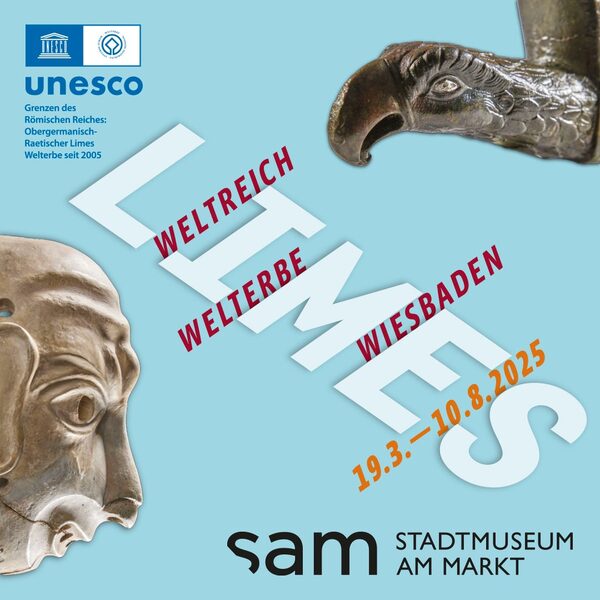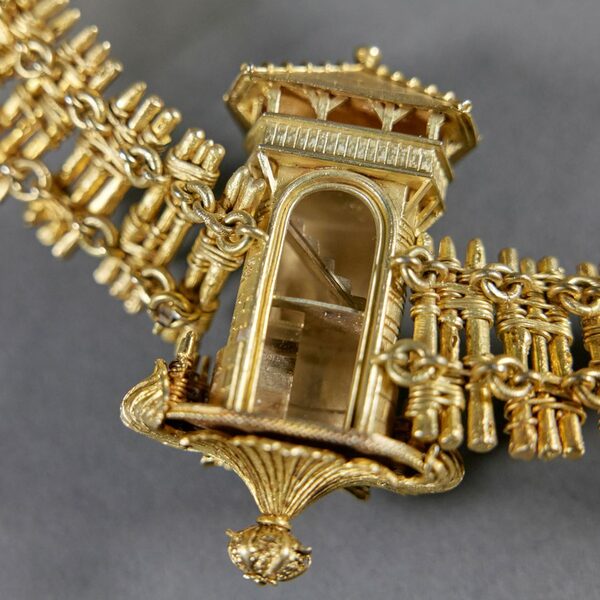LIMES - World empire. World Heritage. Wiesbaden.
To mark the 20th anniversary of the inclusion of the Roman Limes in Germany on the UNESCO World Heritage List, sam - Stadtmuseum am Markt is holding a special exhibition from March 19 to August 10, 2025.
LIMES - World empire. World Heritage. Wiesbaden.
The word Limes means border. As such, the Limes marked the border of the Roman Empire, one of the most important empires in human history. With almost 1,000 years of history, it has shaped the cultural landscape of Europe to this day. Rome reached its greatest extent in 117 AD and from then on concentrated on securing its external borders.
With a length of around 9,000 kilometers, the Limes stretches across Europe, the Near East and North Africa. In Germany, the Limes is around 550 kilometers long, making it the country's longest cultural monument. The border, known as the Upper Germanic-Raetian Limes, runs through four federal states.
The special exhibition shows important finds relating to the Limes from the Nassau Antiquities Collection (SNA). Some of these objects are being presented to the public for the first time. The exhibition is complemented by loans from museums and institutions in the region, which together provide a comprehensive view of the Limes and UNSCO World Heritage Site.
Roman soldiers' equipment provides fascinating insights into military life on the frontier. Everyday objects from civilian settlements along the Limes and from the hinterland paint a picture of the people who lived in the region.
Wiesbaden and Limes research
One of the best-preserved sections of the Limes runs along the Taunus ridge. The Verein für Nassauische Altertumskunde und Geschichtsforschung (Association for Nassau Antiquities and Historical Research) studied it very intensively in the 19th century. From Wiesbaden, early Limes research received decisive impulses from personalities such as Friedrich Gustav Habel (1792 to 1867), Karl August von Cohausen (1812 to 1894) and Emil Ritterling (1861 to 1928), who continue to shape research to this day. A chain of office for the Lord Mayor, donated by Kaiser Wilhelm II in 1897, honors these achievements, among others, and commemorates Wiesbaden's Roman past. It is made of gold-plated silver and shows the Limes palisade with watchtowers. It can also be seen in the exhibition as a loan from the Wiesbaden city archives.
Impressive finds from this era not only tell of life on the Roman frontier, but also of the spirit of research and discovery of the 19th century.
Versatile program accompanying the exhibition: guided tours, lectures and workshops
The exhibition is accompanied by numerous guided tours, lectures and workshops that provide deeper insights into the history of the Limes and its cultural significance as a UNESCO World Heritage Site. These events offer the opportunity to discover the history of the Limes and the associated history of research in an interactive way.
Admission to the exhibition: six euros | four euros reduced
A brochure of the same name has been published to accompany the exhibition, which can be purchased at sam and via the website.
Press kit Limes
Program accompanying the exhibition
Publications
sam - City museum on the market
sam - Stadtmuseum am MarktStiftung Stadtmuseum Wiesbaden
Address
65183 Wiesbaden
Arrival
Telephone
Opening hours
Tue to Sun 11-17 h
Thu 11-20 o'clock
Administration
Wiesbaden City Museum Foundation
Bierstadter Str. 1
65189 Wiesbaden

